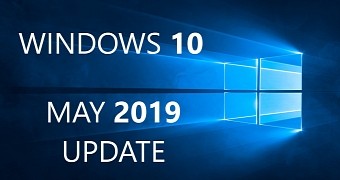Microsoft has recently confirmed that the next OS feature update for Windows 10 would be called May 2019 Update, and as part of the official announcement, the company has also announced a series of changes supposed to improve the updating experience.
In essence, all these improvements are meant to help the software giant avoid making the same mistakes twice, which should without a doubt be a priority for the company after the Windows 10 version 1809 fiasco.
For starters, the latest Windows 10 feature update, officially called October 2018 Update and launched as version 1809, was released, then pulled, the re-published due to a critical issue that might have caused the removal of user files stored in libraries. The revised version still came with bugs, and not only that Microsoft slowed down the rollout, but users themselves tried to push back the update as much as possible.
So with the May 2019 Update, Microsoft is trying to show us that it learns from its own mistakes, and not only that the blunder wouldn’t happen again, but the experience with Windows 10 would be significantly improved.
While Microsoft’s announcement puts the focus on the update experience and the options provided to users in this regard, the company also highlights a simple message: this is what went wrong with the October 2018 Update and which we’ll address with the May 2019 Update.
Never skip an Insider ring
Back in October when Microsoft launched Windows 10 version 1809, the company actually skipped the Release Preview ring of the Windows Insider program.
In other words, Windows 10 October 2018 Update was promoted from the Fast ring to the Slow ring and then directly to users. The Release Preview ring is the last ring of the Insider program, and it’s supposed to help Microsoft test updates before they are pushed to production devices.
The company, however, skipped this key step, suggesting the Windows 10 October 2018 Update was already reliable enough for production devices. As the company learned the hard way, it was not, so now it’s changing this approach significantly.
Windows 10 May 2019 Update will spend more than a month in the Release Preview ring, and during this whole time, it’ll receive several cumulative updates to refine the experience before the launch.
Let users choose when to install the update
Another improvement that Microsoft makes with the release of the May update is the way feature updates and cumulative updates are pushed to devices.
Users are now in full control over updates, and not only they can update devices without installing feature updates, but everyone can now pause the install for a maximum of 35 days.
“Based on user feedback we know that any update can come at an inconvenient time, such as when a PC is needed for a big presentation,” Microsoft says.
Of course, this isn’t necessarily new feedback, and users have been asking for such improvements for many years already. But I guess it’s better late than never. Too bad the company had to deal with a huge fiasco like the October update to get the message.
Always pay attention to user feedback
The file removal bug that was discovered in the October 2018 Update was actually reported as part of the Windows Insider program before the public launch, only that Microsoft somehow missed it.
With the May 2019 Update, the company promises to put the emphasis more on user feedback, and this is why it wants to keep it in the Release Preview ring for a longer period of time.
“We will increase the amount of time that the May 2019 Update spends in the Release Preview phase, and we will work closely with ecosystem partners during this phase to proactively obtain more early feedback about this release,” Microsoft says.
In the end, Microsoft promises to take user feedback more seriously, provide us with more control over updates, and improve the update experience for everyone. This is something that we’ve heard before on several occasions, so the only thing we can hope right now is that Microsoft delivers on its promise this time.

 14 DAY TRIAL //
14 DAY TRIAL //